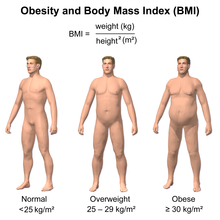At CoreHealth Technologies, we love data. So, when I saw that Fitbit released 150 billion hours’ worth of heart rate data, I thought it would be fun to share some key highlights. [A 3-Minute Read]
What makes these data exceptional is that it also includes a myriad of other data points that can be cross referenced. Things like gender, Body Mass Index (BMI), activity levels, age and sleep tracking can all serve to help make heart rate data more useful and relevant.Before we dive into the highlights of the Fitbit 150 billion hours of heart data research, I’d like to quickly mention Resting Heart Rate (RHR). Many people reading this will already know the significance of this biometric, but for the lay person, it may be helpful to explain what it is and why it’s important.
What is Resting Heart Rate (RHR) and why is it important?
RHR is the average amount of heart beats per minute when you’re at rest and not active or stressed. Health science has shown a strong link between high RHR and early mortality. The inverse is also true where lower RHR leads to increased lifespan. CoreHealth Technologies’ Chief Relationship Officer, Dr. Tyler Amell, sees a future whereby tracked activity and biometrics from wearables will provide more valuable health predictions than traditional Health Risk Assessment surveys are able to provide.
Fitbit Research Highlights
Now that we’ve defined RHR and why it’s important, let’s take a look at some key findings from the 150 billion hours of Fitbit’s research study. Please note that we don’t necessarily know why these data say what they do from a mechanistic standpoint in some cases. Therefore, we should view this data as informational and correlational research for now rather than causational research. They are a starting point for expanding how we understand the impact of RHR and possible interventions.
For both men and women, these data show that a higher BMI (Body Mass Index) resulted in a higher RHR. That’s not too shocking, but interestingly, too low of a BMI also resulted in a higher RHR. There is a sweet spot, in the typical healthy BMI range, when it comes to RHR.
Speaking of men and women, women had a higher RHR on average than men. It’s speculated that this is due to women being smaller on average. A smaller body, also means a smaller heart, which has to work harder than a larger heart.
Steady Exercise Wins the Race
Are you ever jealous of those fitness freaks who work out non-stop? Thanks to the Fitbit data, you no longer have to be! The data confirmed that exercise does decrease RHR. However, exceeding 300 minutes per week, didn’t show much additional improvement. Therefore, we have a point of diminishing returns when it comes to exercise. A moderate routine is as good as a vigorous one when it comes to RHR.
Exercise Does Decrease Resting Heart Rate
Another interesting tidbit was that exercise consistency showed greater benefit to RHR than going hard on the weekend, for example. Exercising a bit each day ended up being better than exercising longer for fewer days.
As you’d likely suspect, RHR slowly increases as you age. The body stops working as well as it once did, arteries and veins aren’t as flexible as they once were, and the heart has to work harder to make up for it. What was shocking though, is that RHR started to decrease at age 50. One hypothesis is that for parents, the stress of raising kids increases RHR. Once they leave home, the stress is less. Another other possible factor is that 30% of the U.S. population have hypertension and are on beta and calcium channel blockers to lower blood pressure.
There is good news when it comes to age as well. These data show that RHR can be reduced at any age, but that it’s much easier the younger you are.
Fitbit Research Says 7.25 Hours of Sleep is Optimal
When it comes to sleep, you may think that your standard 8 hours a night would have the most positive influence on RHR. The data showed otherwise! 7.25 hours was the optimal amount of sleep to have a healthy RHR. Going lower or higher than that had a negative impact on RHR. This is interesting and contradicts other research on the subject and should probably be observed through that lens.
RHR Differs by Country
The last observation I’ll make is that RHR varies by country. In other words, even if individuals in different countries had the same BMI, sleep and activity level, they did not have the same RHR. There’s a lot of potential factors here, including genetics, culture, and diet. Europe scored the best, potentially as a result of an infrastructure that’s more encouraging of physical activity. I like to think it’s their love of wine, which is also a factor.
Summary
Wearables have a lot of potential to predict health outcomes and decide interventions. The Fitbit data are certainly a great example of that. I can only imagine the technology getting better and more relevant with data like this. And CoreHealth Technologies, a leading provider of corporate wellness software, will continue to evolve and innovate along with it to incorporate wearable data to help drive value in workplace investments in health and productivity.
Ready to Talk Wellness Technology with CoreHealth?
About CoreHealth Technologies
CoreHealth Technologies Inc. is a leading all-in-one corporate wellness platform trusted by wellness providers to power their health and wellbeing programs for 3+ million employees worldwide. At CoreHealth, we believe that developing the best employee wellness programs is all about giving providers the right code, design and access to best-in-class innovations. With the most customization, integrations and reliability of any software in its class, CoreHealth’s powerful platform lets users focus on growing great wellness companies. For more information, visit the CoreHealth website.





